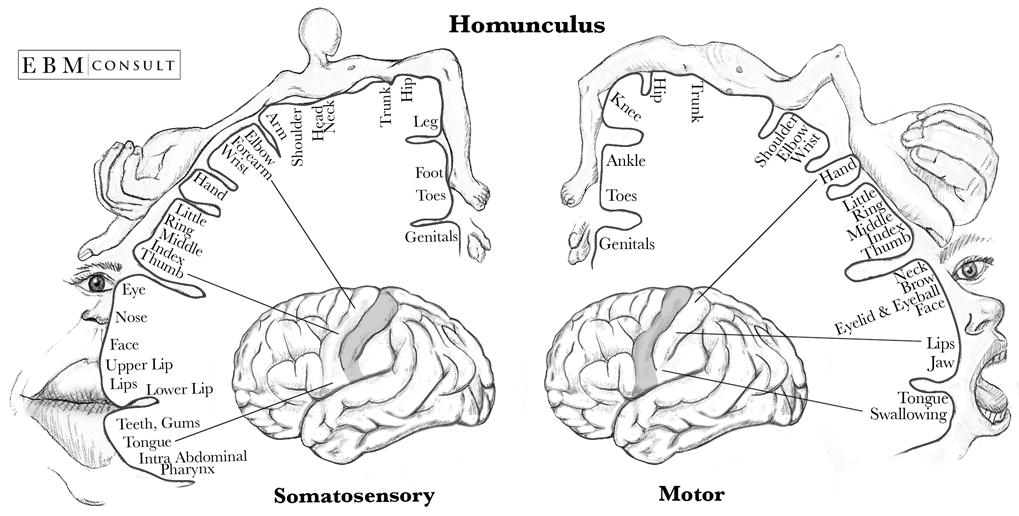There’s been much speculation pertaining to the Wim Hof Method (WHM) and dimethyltryptamine (DMT), an endogenous hallucinogen produced by the human body. This is due to the fact that many practitioners of WHM report having hallucinatory/visionary experiences especially when partaking in the breathing exercises for extended periods of time (over 30 consecutive minutes). It’s a reasonable hypothesis based on there being no other endogenous hallucinogens currently identified (other than DMT related compounds 5-MEO-DMT & Bufotenin).
However, earlier this year (2019), a ground-breaking study out of the Borjigin Lab at the University of Michigan was published showcasing that INMT is found throughout the cerebral cortex, the choroid plexus, and the pineal gland of rats and humans. The study was titled, “Biosynthesis and Extracellular Concentrations of N,N-dimethyltryptamine (DMT) in Mammalian Brain“. In addition to the data indicating that DMT is produced throughout the brain, it was also found that extracellular levels of DMT in the brain were comparable to serotonin, dopamine, and norepinephrine in live rats. This is an important finding based on the question of whether physiological relevant levels of DMT can be produced in the brain.
(26 Guinness World Record Holder - Wim Hof)

At this point, (in 2019) the question is not whether WHM produces DMT. It seems clear based on the data that DMT is always produced throughout the brain. The real question is whether WHM increases the level of DMT in the brain correlating with the subsequent visionary effects. The difficulties in testing this scientifically are due to the invasive methods of extracting cerebral fluid via micro-dialysis. You’re essentially sticking needles in the brain to take fluid samples. While this can be undertaken in rats, unless humans develop a communication method to teach rats WHM, it would be difficult to extract comparable data to human subjects. Other methods of generating data such as taking blood samples are also challenging being that blood levels are not entirely indicative of levels found in the brain. For example, the chemical oxytocin, known as the “love hormone” exudes levels in the brain that are 100,000 percent greater than the amount found circulating in the blood. This makes it fairly difficult to extrapolate in-depth meaning from blood samples when attempting to understand what is taking place in the brain.
This challenge is not solely relegated to DMT measurement and analysis. According to WebMD, even serotonin presents a set of challenges regarding measurement: “Although it is widely believed that a serotonin deficiency plays a role in depression, there is no way to measure its levels in the living brain. Therefore, there have not been any studies proving that brain levels of this or any neurotransmitter are in short supply when depression or any mental illness develops. Blood levels of serotonin are measurable — and have been shown to be lower in people who suffer from depression – but researchers don’t know if blood levels reflect the brain’s level of serotonin.”
A 2011 review in the European Journal of Medicine and Molecular Imaging proposes that positron emission topography (PET) offers the best, non-invasive manner to measure serotonin levels in the human brain. PET uses small amounts of radioactive materials alongside a special camera and computer to evaluate tissue function. In terms of serotonin, PET provides an indirect measure of serotonin metabolism in order to estimate the levels of serotonin in the brain. However, in order to utilize PET for DMT measurement, the primary receptors of activation need to be identified which hasn’t been verified yet.
Nevertheless, based on the recent finding that the enzymes needed to produce DMT are found throughout the pineal gland, choroid plexus, and cerebral cortex, it seems realistic that DMT plays a key role in modulating everyday perception. The particular finding of the choroid plexus involvement is especially intriguing being that this part of the brain is primarily responsible for producing cerebrospinal fluid (CSF). This fluid is found throughout the brain and spinal cord. A 2017 study in The Journal of Neuroscience observed that breathing controls the circulation of CSF throughout the brain. While there’s much focus in the field of neuroscience regarding cerebral blood flow (CBF) and it’s correlation with brain activity, CSF has also been found to be a distribution medium of neuroactive substances influencing brain states.
A 2012 review in the journal Drug Testing and Analysis combed through endogenous DMT studies from 1955 to 2010 providing data that the some of the highest reported levels of DMT were found in the CSF when compared to urine, blood, and saliva.
Going back to the question of whether WHM upregulates DMT production or not. Based on the fact that DMT is produced at the choroid plexus which is the site of CSF production and that breathing is a key modulator of CSF production and circulation, it’s not far-fetched to believe that WHM does increase DMT levels alongside many other chemical secretions. We must remember that while INMT is the enzyme necessary for DMT production, INMT is also responsible for producing 5-MEO-DMT “The God Molecule” and Bufotenin (5-HO-DMT). This means that there is the high likelihood that WHM upregulates not only DMT but 5-MEO-DMT and Bufotenin as well.
To support the endogenous hallucinatory system even further, monoamine oxidase inhibitors (MAOIs) also exist within the body. MAOI’s are most well known for their role in the shamanic brew known as Ayahuasca. These chemicals provide the suppression of monoamine oxidase activity in the gut allowing DMT to retain oral activation as well as influence the length of the experience. The most widely studied endogenous MAOI is tribulin. However, there are numerous other MAOI’s found within the body such as Tryptoline, Pinoline, Harman, and Neurocatin. This essentially provides the basis for the term “Endohuasca“, the endogenous biochemical analogue of Ayahuasca.
The Wim Hof Method seems like a powerful method of not only inducing altered states of consciousness but also a protocol with which to induce distinct neuroplastic changes throughout the brain and nervous system. By comparison, neuroplasticity is one of the main end results and benefits of ingesting psychedelic compounds. The combination of breathing rounds (which vastly increase CSF production), CSF circulation (which has recently been tied with cleansing the brain), and breath retention which causes a surge of cerebral blood flow (while CSF volume is at it’s peak) seems optimized to induce positive neurological alterations via increased fluid dynamics. The cold immersion appears to add another layer of neuroplastic properties based on the notion of cortical homonculus. This points to the fact that every nerve ending found throughout the body and skin are intimately intertwined with different areas of the brain. If a person were to burn their right hand, it would create a specific neurological imprint in the brain. The fact that WHM correlates with full body exposure to the cold indicates there are wide ranging neuroplastic transpirations occurring from this.

From the many discussions regarding DMT and WHM throughout the internet, its seems as though it is a very polarizing topic. People who have experienced visionary states from prolonged WHM are confident in stating that DMT is being upregulated following the process. Others claim that because WHM does not induce precisely the same experience as a breakthrough dose of exogenous DMT that there is no correlation. One thing I must remind both parties about is in regards to the DMT study carried out by Dr. Rick Strassman in the 1990’s. He injected volunteers with 4 levels of DMT (0.05 mg/kg, 0.1 mg/kg, 0.2 mg/kg, 0.4 mg/kg) with the two lowest levels being sub-psychedelic meaning that there were no visionary experiences. Instead, the volunteers experienced deep euphoria following the low doses. This indicates that DMT can possibly be upregulated within the human body without inducing a full-blown mystical experience. Euphoria is an emotion that is widely reported following extended WHM utilization.
Yes, it’s a complicated topic being that nothing within the body acts singularly. There are wide ranging fluctuations of many biochemicals that correlate with changes in perception. In 2015, a rat study published in the Proceedings of the National Academy of Sciences observed that at the moment following asphyxia induced cardiac arrest, a dramatic surge of many neurotransmitters occurred in the brain simultaneously. Serotonin levels increased by 2200%, dopamine increased by 400%, norepinephrine increased by 1200%, GABA increased by 800%, and adenosine increased by 1800%. The recent study by the University of Michigan measured DMT levels increasing 600% within 30 minutes following cardiac arrest. It’s clear that if there is a biochemical correlate to the “Near Death Experience” (and even WHM), it is taking place in a flood of many chemicals influencing the experience rather than just one. In the same vein, exogenous psychedelics such as LSD and even DMT operate by inducing a cascade effect of chemicals within the brain. LSD causes an increase of glutamate, an increase in serotonin, a decrease in norepinephrine, and a fluctuation in dopamine. Strassman’s DMT study measured significant increases in the levels of corticotropin, cortisol, prolactin, and growth hormone.
In conclusion, I believe that WHM definitely upregulates endogenous DMT (and likely 5-MEO-DMT as well) based on its effect on mood, emotion, neuroplasticity, site of synthesis, as well as inducing some profound visionary states. This doesn’t preclude many other endogenously produced chemicals from being upregulated as well. For whatever reason, the topic of DMT stirs up much emotion based discussion. However, when looking at the facts surrounding the latest research regarding not only DMT but the various properties of cerebrospinal fluid, there seems to be enough data supporting the WHM-DMT connection. This is especially in light of many mainstream theories and industries built upon much weaker data points.
If you’d like to see research specifically pertaining to WHM and DMT, contact me at jchavez@dmtquest.org. We are looking to raise as much money as possible in order to answer more questions regarding this specific topic of inquiry.
DMT Quest is a non-profit 501(c)3 dedicated to raising awareness and funds for endogenous DMT Research. This specific field of psychedelic research has been underfunded for many decades now. It’s time to take our understanding of human physiology, abilities, and perception to the next level. You can also follow us at Facebook, Instagram, or Twitter.
